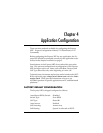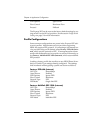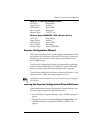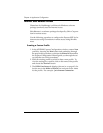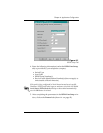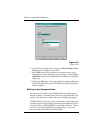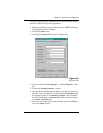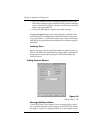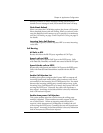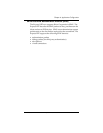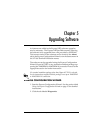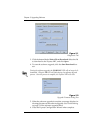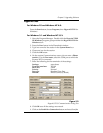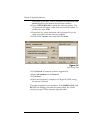
Chapter 4. Application Configuration
61202.153L3-1 Express XRT User Guide 45
directory number on which message waiting has been provi-
sioned. Once a message is read, the stuttered dial tone will stop.
Flash/Hook Default
When you select the Call Waiting option, the phone will function
like a standard phone with call waiting. When you select Confer-
ence, the flash hook will connect up to six people via a conference
call. See Call Waiting on page 13 and Conference Calling on page 13
for details.
Incoming Voice Call Options
These options specify how the Express XRT is to route incoming
voice calls.
Call Routing
All Calls to DTE
Routes all calls to the RS-232 port, regardless of Call Type.
Speech calls to POTS
Routes calls with a Speech Call Type to the POTS ports. Calls
with Data 56k, Data 64k, and Audio are routed to the RS-232 port.
Speech/Audio calls to POTS
Routes calls with Speech and Audio Call Types to the POTS ports.
Calls with Data 56k and Data 64k are routed with the RS-232
port.
Enable Call Rejection List
Enabling this option configures the Express XRT to compare all
incoming Speech and Audio calling party numbers to the list of
ten numbers in the Incoming Voice Call Rejection List. If a match
between the incoming calling party number and an entry in the
Incoming Voice Call Rejection List is found, the Express XRT will
not ring the POTS port. Generally the caller will experience a
busy signal. A message in the Status Buffer is the only indication
that a call has been rejected.
Enable Anonymous Call Rejection
This option enables rejection of calls where the calling party
number is blocked. These numbers normally appear as Private
on a Caller ID unit. When an incoming anonymous call is
received, while Anonymous Call Rejection is enabled, the call
will not ring the POTS ports. Generally the user will experience a
busy signal. A message in the Status Buffer is the only indication
that an anonymous call has been rejected.



